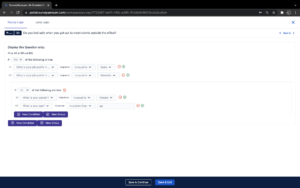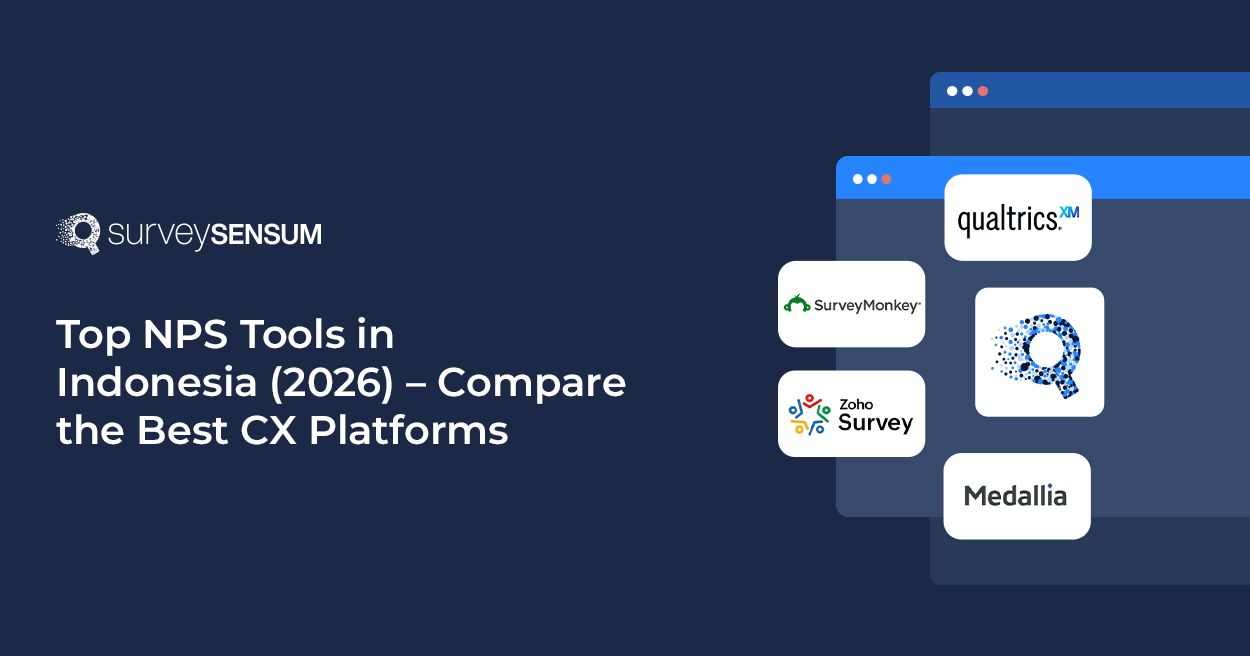

Did you know that 96% of dissatisfied customers never return to a business they’ve had a negative customer service experience with? – Forbes
That’s a staggering figure that underscores the immense significance of providing exceptional customer service. In today’s competitive business landscape, understanding your customers’ needs and experiences isn’t just an option; it’s a lifeline.
This is precisely where customer service surveys come into play. They aren’t just a routine task to check off the list; they are your direct line to the heartbeat of your customer base. These surveys yield invaluable insights into customer satisfaction levels, illuminating the path toward service improvements and an enhanced overall customer experience.
But here’s the challenge: the average email survey response rate only being 24.8%, you need all the help you can get to encourage customers to complete your surveys. Fortunately, your survey response rates can be as high as 85% when the respondent population is motivated and the survey is well-executed.
So, it’s time to explore the common pitfalls in creating customer service surveys. And not just that, we’ll be offering practical solutions to help you optimize these powerful tools for maximum benefit.
10 Common Survey Mistakes and How to Fix Them
Mistake 1: Asking Vague or Leading Questions
Mistake 2: Too Many Surveys with Too Many Questions
Mistake 3: Neglecting Mobile-Friendly Design
Mistake 4: Not Taking Action on the Feedback
Mistake 5: Ignoring Response Scales and Options
Mistake 6: Failing to Pre-Test Surveys
Mistake 7: Not Using Skip Logic and Branching
Mistake 8: Neglecting Data Privacy and Security
Mistake 9: Not Analyzing the Data Properly
Mistake 10: Not Informing Customers of the Actions that Can be Taken
Mistake 1: Asking Vague or Leading Questions

Unclear, ambiguous, or leading questions can majorly impact the survey responses, creating a skewed perception of true customer sentiment.
For example, asking,
→ “How did you feel about our stellar customer service?”
presupposes that your service is excellent, which might not be the case.
To rectify this issue, it’s crucial to ask clear and unbiased questions such as
→ “On a scale from 1-10, rate your satisfaction with our customer service.”
Ensure that they’re straightforward and simple for all respondents to understand. This allows for precise and honest responses.
Here are some other things you can do to avoid asking vague or leading questions:
- Remove Biased Language: Don’t use qualifiers like “amazing,” “quick,” or “fantastic” in front of a question. For example, “What did you love about our quick shipping?”
- Avoid Yes/No or Either/Or Answers: Open-ended questions are best if you want to understand exactly how your customers feel about your customer service efficiency, which is a key factor that sets the best companies for customer experience apart from the rest.
- Never Suggest an Answer: Questions like “How much time could we save you on a daily basis?” imply that the item saves them time. Use neutral language instead.
- Avoid Combining Two Questions Into One: This can confuse customers as to what they’re responding to. Only ask one question at a time to ensure clarity.
- Speak Your Respondents Language: Don’t use jargon, even if you think the respondents are familiar with it. This could confuse or frustrate customers.
It’s typically better to over-explain than under-explain.
For example, if you ask, “How did you contact our customer support staff?” place “tablet, smartphone, desktop, or phone) in brackets beside the question. You’ll want your customers to be confident about what they’re answering.
Mistake 2: Too Many Surveys with Too Many Questions

Approximately 65% of people will grow tired of your survey once it goes on for 7 minutes or longer, so opt to keep yours as short as possible. Don’t overwhelm customers with long surveys.
A customer service survey loaded with multiple questions might deter participants, causing them to quit even before completion. And dilutes the quality of your responses as respondents rush through to finish it.
For effective feedback collection, the mantra should be ‘less is more.’ Keep in mind that every question has to serve a purpose—if it’s not providing actionable insights, you don’t need it.
Survey fatigue is a very real thing, and responders are less likely to provide actionable feedback the longer they spend answering questions.
→ Sending fewer but strategic surveys at relevant touchpoints minimizes participant fatigue and maximizes accuracy. Strive for conciseness by asking only 3-4 key questions per survey.
Mistake 3: Neglecting Mobile-Friendly Design

75% of people complete surveys on their mobile devices, showing the need for mobile-readiness. This statistic underscores the critical importance of mobile readiness.
Much like how PDF forms seamlessly retain their formatting across devices, your survey must be effortlessly readable for all participants, regardless of whether they’re using a phone or tablet.
Ignoring this reality can severely impact your survey completion rates, chances are customers may abandon it out of frustration. The consequences stretch beyond poor engagement rates. It could also negatively affect the perception of your brand’s technological prowess.
To prevent this, keep mobile-friendliness in mind when designing surveys. Make sure that elements like text size, buttons, and drop-down menus are not just functional but also user-friendly on smaller screens. You can check half price packaging to get an idea about how a mobile-friendly website should look, feel, and navigate because it epitomizes speed and functionality on smartphones Alternatively, you can convert your PDF to URL to ensure a fully mobile-responsive online design.
Here are some other things you should consider when creating a mobile-friendly survey:
- Consider Touch Input: Fingers don’t have the same precise imputability as mouse cursors, so make sure that survey buttons are comfortable enough to push.
- Cut the Clutter: Only include what’s necessary to cut down on scrolling and wrap-around text. Keep text, rows, and column length to a minimum.
- Limit Input Methods: Make sure that tapping and swiping are the primary input methods for smartphones, as other types of inputs are burdensome on mobile.
- Increase the Font Size: Increasing the font size from 12 to 24 will make everything easier to read. However, make sure the text doesn’t completely occupy the screen.
- Decrease the Survey Length: While you could get away with multiple questions on a desktop, you shouldn’t ask more than three questions on mobile to avoid fatigue.
Mistake 4: Not Taking Action on the Feedback

Merely collecting feedback from your customers isn’t enough. The biggest mistake brands make is failing to act upon the data they’ve gathered. If you’re not responding to your customers’ feedback, this can lead to frustration and a sense of being undervalued.
The solution lies in closing the feedback loop.
- Collecting Feedback: Start by actively collecting feedback from your customers through surveys, reviews, Facebook polls or direct interactions.
- Feedback Analysis: After gathering feedback, take the time to thoroughly analyze it for patterns, trends, and common themes. Identify both positive and negative feedback points. In this scenario, using advanced tools, such as call center analytics software, allows businesses to dig deeper into these insights, offering a more granular view of customer interactions and driving meaningful improvements in customer service.
- Identify Priorities: Prioritize the feedback based on its impact on your customers’ experience and your business goals. Not all feedback requires immediate attention, so focus on what matters most.
- Actionable Solutions: Develop actionable solutions and strategies to address the concerns and suggestions raised by your customers. Ensure that these solutions are practical and aligned with your business objectives.
- Implementation: Put your action plan into motion. Assign responsibilities and timelines for implementing the changes and improvements derived from the feedback analysis.
- Communication: Keep your customers informed about the changes you’re making based on their feedback. Transparent and clear communication helps build trust and shows that you value their input.
- Feedback Loop Closure: Continuously monitor the effects of the changes you’ve implemented. Assess whether they have positively impacted your customers’ experiences and your business goals.
- Iterate and Improve: Use ongoing feedback to refine your strategies further. The process of collecting, analyzing, and acting on feedback should be a continuous cycle of improvement.
By following these steps, you can effectively address the mistake of not taking action on customer feedback and build stronger customer relationships while enhancing your business’s reputation.
Mistake 5: Ignoring Response Scales and Options

The reliability of your survey data largely depends on response scales. Inadequate or inappropriate response options can lead to inaccurate measurements of customer sentiment.
Common blunders include having too few or too many options, not offering a neutral midpoint, or using confusing rating scales. To alleviate these issues, carefully choose the scale that best represents possible degrees of customer sentiment towards aspects of your service.
Whether you go for a Likert scale, binary yes/no, or a numeric rating scale largely depends on what precisely you are trying to measure, and one response scale won’t be useful every time.
Balance is key; aim for comprehensiveness without overwhelming respondents with choices.
Let’s explore this a bit more. A poor example of a survey scale may include a numbered scale on questions where that wouldn’t make sense. For example, if the survey asked, “How likely are you to call our customer service team again?” a numbered scale wouldn’t be appropriate.
To fix this, you would either have to change the question to “How would you rate our customer service staff?” or switch to a “Never to Always” scale if you want to keep the same question.
Boost Customer Satisfaction with Real-Time Feedback – Request a Demo
Mistake 6: Failing to Pre-Test Surveys

It’s necessary to pre-test your customer service surveys before distributing them on a broader scale. If you skip this step, you run the risk of disseminating a survey filled with errors, confusing language, or poor flow. This can lead to biased results and frustrated respondents.
To prevent this, conduct comprehensive pre-testing. Have team members or a focus group complete the survey and provide detailed feedback on everything from clarity of questions to design. Use their feedback to refine your questionnaire into an effective data-gathering tool.
Mistake 7: Not Using Skip Logic and Branching

Implementing skip logic and branching in your surveys personalizes the survey experience for each respondent, enhancing its relevance. Yet, many businesses fail to adopt this methodology. Forced to answer irrelevant questions can disengage respondents, reducing response rates.
To address this issue, you should use skip logic. This feature allows respondents to bypass irrelevant questions based on their previous answers, thus optimizing the flow of your survey.
As a result, you’ll not only increase engagement but also secure more accurate data.
Mistake 8: Neglecting Data Privacy and Security

One aspect often overlooked in customer service surveys is data privacy. Your respondents trust you with their info. Its mishandling could breach that trust, leading to severe reputational consequences.
In fact, 71% of consumers are unlikely to buy if a company loses their trust.
To prevent potentially damaging breaches or loss of trust in your survey processes, ensure strong security measures are in place. This includes using VPNs to secure internet connections, particularly when handling sensitive respondent data. Make sure personal data is encrypted, stored securely, and used only for the purpose envisaged by respondents when they provide it. Additionally, consider implementing an antivirus with VPN integration to further fortify your system against cyber threats and safeguard the confidentiality of respondent data throughout the survey process.
Communication around data handling also plays a crucial role. Let your customers know that their information is in safe hands with clear privacy policies attached to your surveys.
Mistake 9: Not Analyzing the Data Properly

Proper data analysis is crucial for interpreting customer sentiment and turning it into actionable insights. Imbalanced assessment, neglecting outliers, or misinterpreting results can lead to misguided service improvements that miss the mark of customers’ actual needs.
To avoid such errors, consider using tools such as SurveySensum’s Text Analysis. This AI-powered solution assists in gaining accurate insights from open-ended responses, analyzing trends, and identifying areas of improvement based on your customer feedback in minutes.
Mistake 10: Not Informing Customers of the Actions that Can be Taken

Keeping customers in the dark after collecting their feedback is a major misstep. This lack of communication can cause distrust and result in lost opportunities for deeper engagement.
To fix this, transparency is key. Clearly communicate the steps you plan to take based on customer feedback. This could involve sharing updates via newsletters, social media posts, or directly through email. Letting your customers know their opinions have inspired changes not only validates their contribution but also makes them feel valued and heard.
Here’s an example of how a well-known beauty brand did it –
In Conclusion…
As we’ve pointed out, creating effective and streamlined customer service surveys is vital.
By avoiding common survey mistakes such as ambiguous questions, overlooking mobile design, or neglecting data privacy, you can align more closely with your customers’ true sentiments.
The solutions provided here will guide you toward better survey design and implementation.
Keep the spotlight on your customers—every question asked and action taken should revolve around their needs and experiences. With this customer-centric approach in place, you’re on the right path to continual service improvement and, ultimately, greater customer satisfaction.
Customer feedback tools like SurveySensum can help you create lucrative customer service surveys, facilitate multi-channel distribution, simplify response analysis, and guide you in taking necessary actions. Moreover, with the support of dedicated CX consultants, you’ll have expert assistance every step of the way, ensuring a seamless journey towards improving customer satisfaction and your overall business success.
Author Bio:
Michael Dunlop is the Co-Founder of Linkbuilder.io, a digital marketing company that specializes in SEO and content marketing. He is a passionate advocate for business and personal development and a contributor at industry blogs.















